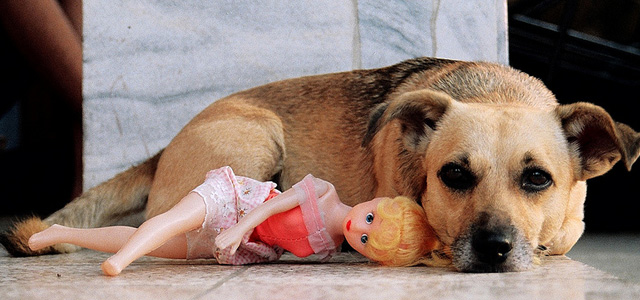The feast of Epiphany celebrated on January 6, which commemorates the visit of The Three Kings to the baby Jesus, and the time of the Christmas when children recieve toys, has embodied part of the Christmas spirit for many Cubans despite the fact that in the early years of the Revolution, the new government stopped the sale of toys on that day. From then on it was only possible to buy rationed toys on the third Sunday of July, on which Children’s Day falls. Also, only three types of toys were offered: “básico” (the most beautiful toys), “no básico” (toys of lower quality), and “dirigido” (simple and cheap toys).

However, after the Special Period, the ration book allowing Cubans to purchase industrial goods was removed. As a consequence, rationed toys are not available any more. Reflecting on the past, Alejandra tells me: “Buying toys with a ration book was an odyssey. Once I wasn’t able to get to the shop before the last day of sale and when I finally got to the counter, there was only one toy left – a ‘dirigido’ one. It was a Russian plastic model truck.” Thus, she wasn’t able to fulfil her daughter’s dream that year and buy her a doll.
It’s been quite a while since toys sold in the local currency disappeared from shops, and with them, all traditional toys like skipping rope, spinning top, yo-yo, marbles or knuckle-bones. Nowadays, one can hardly see a child on roller skates or riding a cart along the street. The reason is that there are not many parents who can afford to pay 40, 60 or even 90 CUC for such toys.
“I went to buy a doll for my granddaughter,” a neighbour told me this Christmas, “but even though I went to several shops, I wasn’t able to buy any because the cheapest one cost 11 CUC! I didn’t find any that I could buy in the local currency. Even rag dolls that I saw were priced in CUC.”
Cuban mothers are thus bound to be creative. So, Irene, who has been unemployed since the 2011 lay-offs, decided to make presents for her daughters herself. For each of them she made a fabric bag, in which she put a rag doll she made herself, some repaired toys that used to belong to her sister and some cheap sweets. The night before the feast of Epiphany she put everything under the bed while the girls were sleeping. She poured out the water and threw away the grass that the girls had left for the camels and early in the morning on November 6 she spurred the girls to look under the bed to see whether The Three Kings had left anything for them. She felt proud of being able to do so much with the little she had, although it was really difficult for her, like for so many others, to sustain the illusion of Christmas in her family.
Another young friend of mine told me that she was also unable to buy toys for her son this year because there was nothing available that would cost only around 2 or 3 CUC. Everything was very expensive. She told me about the mistake she made when she took her son to a shop to allow him to choose a toy himself. On their way to the shop, they passed through a park where they saw a small boy riding a luxurious toy car in front of his parents. As they were passing by, my friend could hear the father speaking and noticed that he had a foreign accent.
When they reached the shop, her son fell in love with a small remote control car that his mum couldn’t buy because it cost 42 CUC. She told me that her son didn’t understand why she couldn’t buy him such a small toy car if the parents of the child in the park could purchase a much bigger and more beautiful one for their son. The mother tried to explain as well as she could that the other child ‘s father was a foreigner. To cheer him up a bit, she took him to the Habana Libre hotel to look at the Christmas tree erected in the lobby. The boy was amazed at the size of the tree – it was enormous. “Mum,” he said, “this tree is really big… I bet it’s for foreigners.”

Leave a comment